Et’hem Bey Mosque
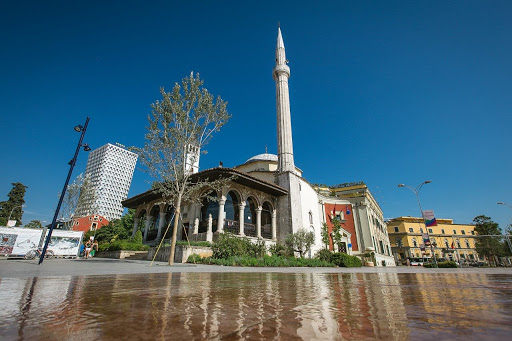
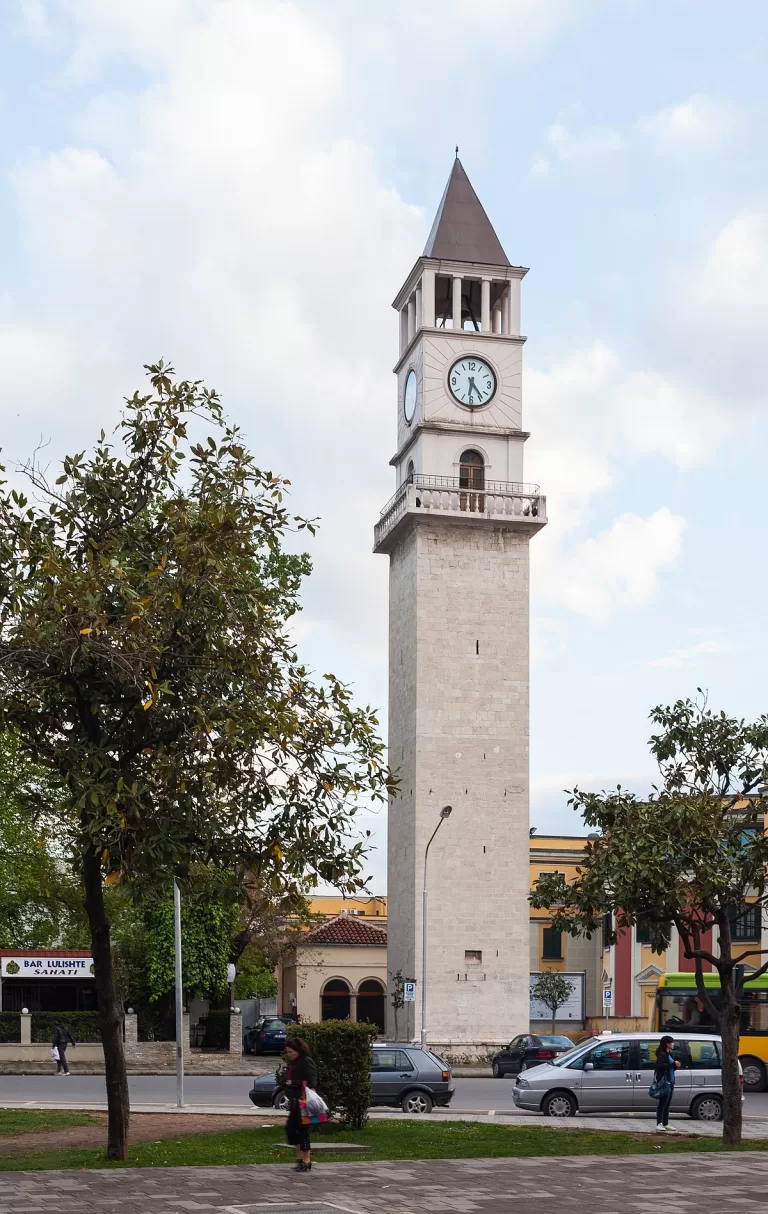
The Clock Tower
The Clock Tower is one of Tirana’s symbolic monuments. Its construction began between 1822 and 1840, funded by Tirana’s noble families. The tower has 90 spiral steps, stands 35 meters tall, and was the tallest building in the capital until 1970. Originally, it had a bell from Venice that chimed every hour. The Clock Tower, a symbol of the Tirana Municipality’s emblem, together with the Et’hem Bey Mosque, forms a unique architectural ensemble, the most photographed in the capital. From the tower’s balcony, you can view Tirana’s main square and the complex of historic buildings.
Basilica of St. Mëhill
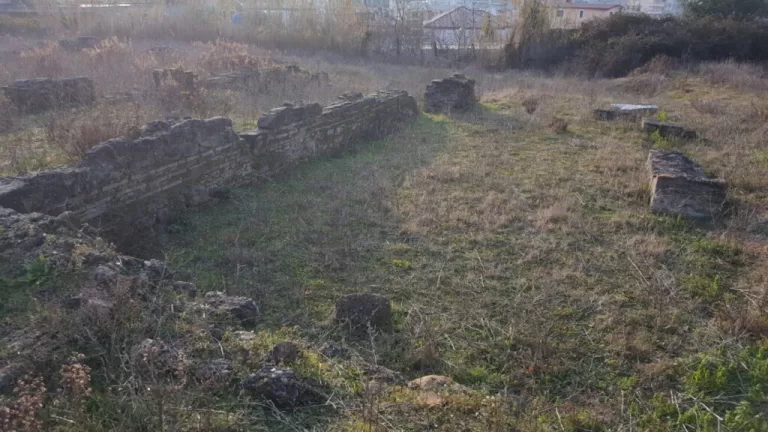
Customise your Albanian tour now!
Other Destinations
National Historical Museum
Located in central Tirana near Skanderbeg Square, the National Historical Museum is notable for its mosaic facade. Inaugurated on October 28, 1981, it is an important asset of Tirana’s cultural, historical, and social heritage.
The museum has a perimeter shape with an inner courtyard and features eight exhibition pavilions, including the Pavilions of Antiquity, Middle Ages, National Renaissance, Independence, Iconography, Ethnography, Anti-Fascist War, and Communist Genocide. Additionally, it houses archive and laboratory spaces, temporary exhibition halls, and conference rooms. The museum’s collection includes about 5000 objects spanning from the 4th millennium BC to the second half of the 20th century.
The facade’s mosaic covers 400 square meters. It depicts 13 figures in various groups, such as Illyrian warriors and archers, Albanians of the anti-Ottoman war, National Renaissance figures, and a victorious partisan. The central figures, a worker and a peasant woman, are surrounded by other figures symbolizing the National Liberation Anti-Fascist War.
The mosaic was created by painters Vilson Kilica, Josif Droboniku, Agim Nebiu, Anastas Kostandini, and Aleksandër Filipi and was restored with funding from the European Union. The National Historical Museum welcomes all visitors and foreign tourists interested in learning about Albanian history.
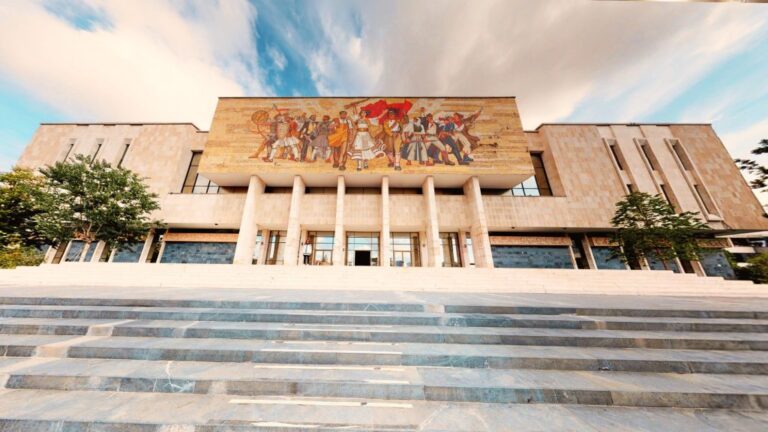
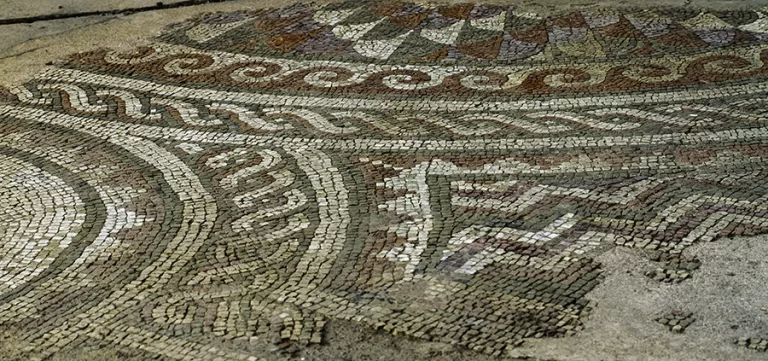
The Mosaic of Tirana
The Mosaic of Tirana is a cultural monument of category I, dating back to 1973. This archaeological monument consists of the ruins of an ancient building that were accidentally discovered in 1972 during the construction of the “Partizani” residential complex.
Within the discovered ruins, three rooms adorned with mostly geometric mosaic patterns can be seen. According to archaeologists and cultural heritage experts, this site represents a rural settlement from the early centuries after Christ, which was later replaced by a “rustic” villa in the beginning of the 3rd century.
The archaeological site “The Mosaic of Tirana” has become one of the most visited attractions by tourists in the capital city.
The mosaic on its main facade is a work spread over 400 square meters.
It unfolds 13 figures presented in several groups, such as the group of Illyrian and Albanian warriors and archers of the anti-Ottoman war, then the National Revival is represented by two figures and the victorious partisan. Meanwhile, the two symbolic figures, the worker and the peasant, are in the center of the mosaic surface and the other figures next to them symbolize the Anti-Fascist National Liberation War.
The Toptani Sarajet
The Sarajet, a characteristic Oriental-style house found on “Abdi Toptani” street, in the historical center of the capital city of Tirana.
This two-story building constructed with brick walls and a wooden frame on the upper floor is of interest due to its functional design, decorative architecture, and its composition as a unique ensemble with the surrounding buildings.
The Toptani Sarajet were built around the years 1833-1840 and are among the few feudal mansions that have survived the test of time. The building, oriented towards the southeast, consists of 32 rooms in the Oriental style, including a “dhoma e zjarrit” (fireplace room), a “çardak” (open balcony), a “hajati” (porch), and open staircases on the eastern side.
This distinctive building, representative of the prominent Albanian feudal class in the 18th and 19th centuries in the Tirana region, was restored and reconstructed at the beginning of the 2000s to be converted into a restaurant and café for several years.
As a Cultural Monument of the First Category, the Toptani Sarajet will also enjoy the status of a “house museum.” One floor will house the Ethnographic Museum of Tirana, while the other floor will serve as a memorial to the special relationship between Albania and the United States since this building was the first headquarters of the American legation in Tirana.
Following the earthquake of November 26, 2019, a comprehensive study has been undertaken in collaboration with the Ministry of Culture to fully restore the facility, adding additional spaces for its improved functionality.
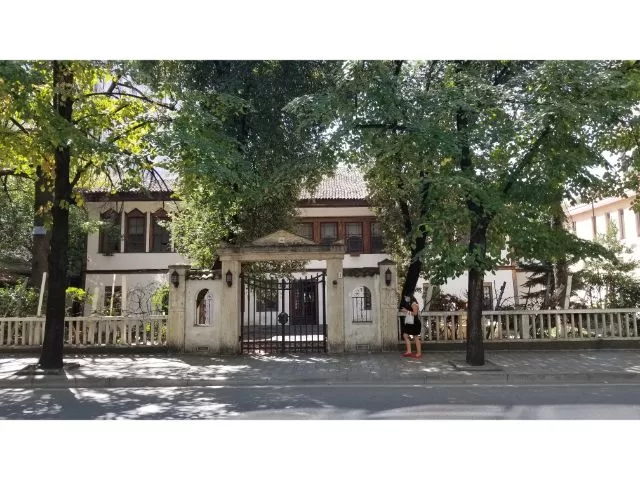
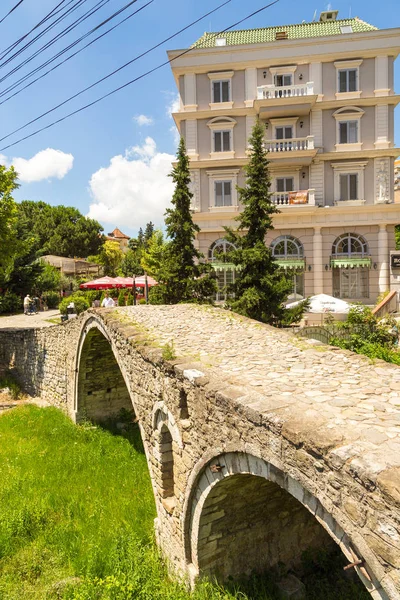
The Tabak Bridge
The Tabak Bridge was built in the first half of the 18th century by the Tobacco Guild, from which it got its name. At that time, this bridge served to connect two parts of the city that were divided by the Lana River. On one side, it was used by the villagers coming into the city with their livestock, while on the other side, it was frequented by craftsmen and leather sellers, one of whom belonged to the Tobacco Guild. In 1930, the Lana River was diverted, and the bridge lost its important commercial function, leading to its gradual deterioration.
In recent days, the “Tabak Bridge” has been restored and turned into a tourist attraction, visited by tourists and used by pedestrians to access the historical center.
The House of Painter Sali Shijaku
One of the most beautiful examples of typical 19th-century Tirana architecture is the house of the painter Sali Shijaku, located near “Siri Kodra” street, designated as a Cultural Monument of the First Category. This residence is situated on one of the streets leading to the center of Tirana and is still inhabited by the renowned painter to this day. The house now functions as a traditional restaurant and an art gallery where 100 paintings and artworks from the collection of the painter Sali Shijaku are exhibited. The building serves as an attraction for foreign tourists visiting Tirana, allowing them to get up close and experience the historical Tirana tradition in the architecture and decoration of homes.
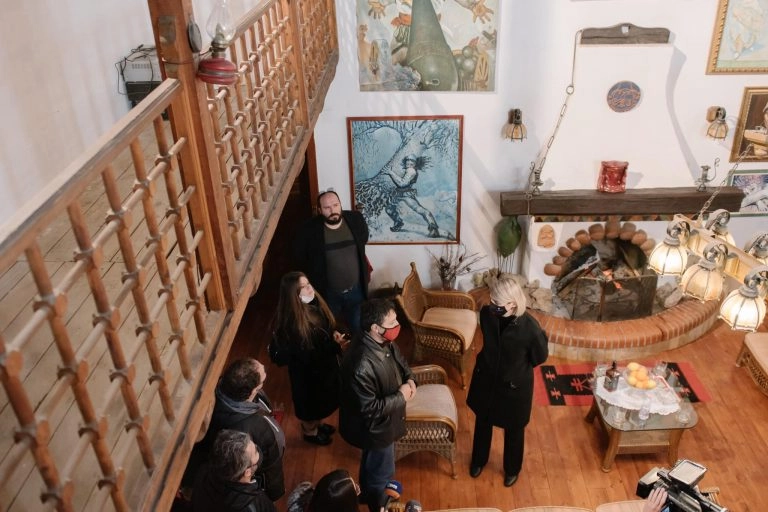

The Mausoleum of Kapllan Pasha Toptani
The Bride’s Mausoleum
The Bride’s Mausoleum is one of the cultural heritage monuments in the village of Mullet, near Petrela, in the Tirana district. It is located near the Church of Maxhara in the village of Mullet. Given its similar function to monumental graves from the Ottoman period, it is believed to date back to the late 15th and early 16th centuries. This mausoleum carries a legend about a young bride who was killed on her wedding day during a dispute between two opposing parties who crossed paths at the village’s entrance. In her memory, the “Bride’s Mausoleum” was built.
The lush green landscape surrounding this monument provides moments of tranquility and relaxation.
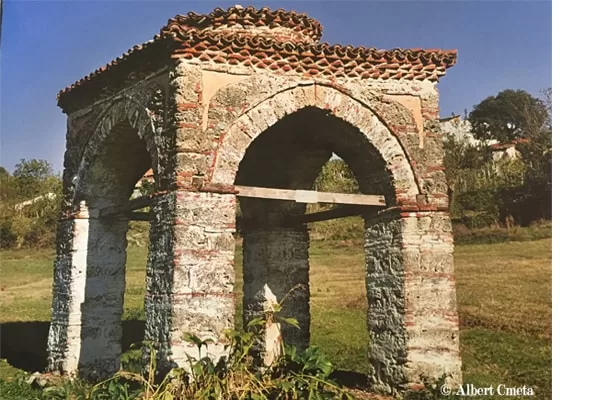
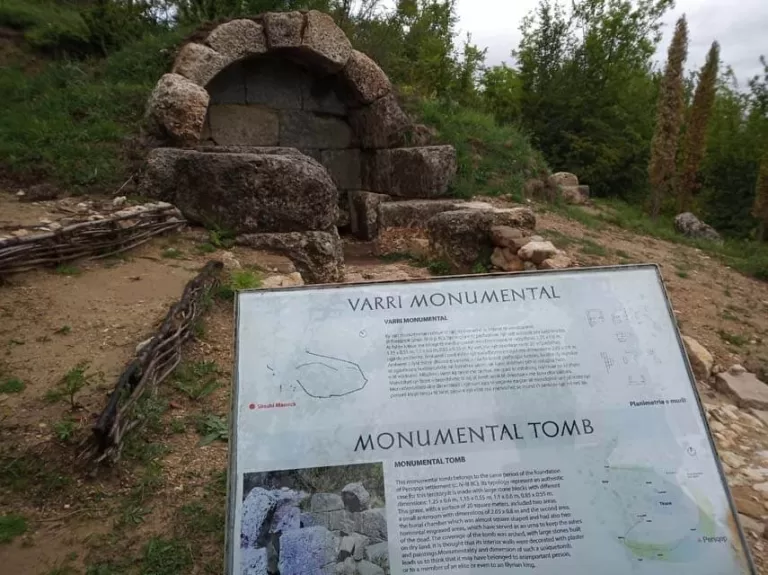
The Monumental Grave in Përsqop
The Mosaic of Orpheus


The Beauty of Durrës
“The Beauty of Durrës” is the oldest and most significant mosaic discovered in Albania.
It is a polychrome mosaic from the 4th century BCE, with an elliptical shape and an area of 9 square meters. “The Beauty of Durrës” depicts the figure of a beautiful woman against a black background, surrounded by flowers and decorative elements. This mosaic was first uncovered during the construction of a fortification trench by the Austrian army in 1916. Austrian officer Camillo Prashnicher, a distinguished archaeologist, took care to preserve the mosaic layer. He was the first to publish a photograph of the mosaic in a book dedicated to archaeological discoveries in Albania.
In 1959, this masterpiece of 2300-year-old figurative art was rediscovered in the foundations of a two-story house, just 150 meters behind the “Aleksandër Moisiu” theater in the city of Durrës. In antiquity, the mosaic was called “The Beauty of Durrës” as a metaphor in honor of the beautiful women of the ancient city and the skilled Illyrian artisans. It adorned a luxurious bathhouse in the ancient city and was created using natural stones with different colors intricately arranged next to each other.
“The Beauty of Durrës” is one of the most visited monuments by tourists and adds to the beauty and priceless value of the ancient city of Durrës, known as Dyrrachium in antiquity. In 1982, the mosaic “The Beauty of Durrës” was relocated from Durrës to the main hall of Antiquity at the National Historical Museum in Tirana.
The Church of St. Ndout
The Church of St. Ndout, also known as Shna Ndout among believers, is one of the most beautiful and well-known churches of the medieval period in Albania. It is located on the shores of the Adriatic Sea, on the northern side of the Cape of Rodon, and offers a breathtaking view for both local and foreign visitors. The Church of St. Ndout is mentioned in historical documents as the Church of St. Anastasia from the 13th to 14th centuries. In the 15th century, it came into the possession of Franciscan missionaries who carried out its restoration, and since then, the church has been known by the name of St. Anthony.The Church of St. Ndout is a cultural heritage monument constructed using Byzantine cloisonné technique, with elements of Romanesque and Gothic architecture, such as pointed arches from the 13th century. Among the preserved fragments of mural paintings, a two-headed eagle and a young rider without a bridle, as well as two birds, can be seen.Due to its location in a captivating landscape overlooking the sea and its rare cultural and historical heritage, the Church of St. Ndout is one of the most visited tourist destinations.
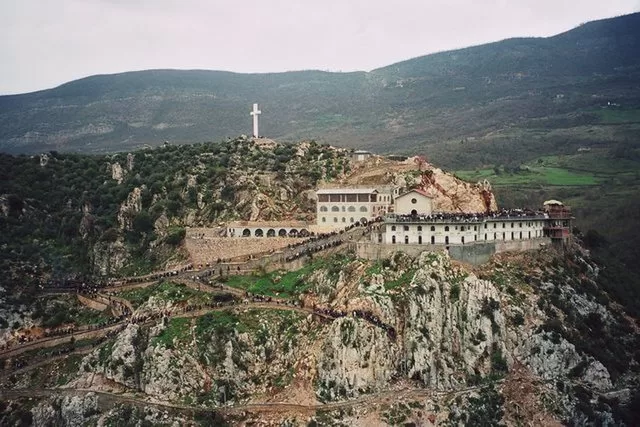

The Walls of the Gate or Porto Romano
Porto Romano is located approximately 7 km north of the city of Durrës, in a place called Porto Romano. It once served to close off the narrow strip of land between the sea and the bay. The gate’s wall was built to protect the city of Durrës from a possible attack from the north, taking advantage of the natural terrain and the proximity of the sea to the bay of Durrës.
This is evidenced by the historical event of the attack suffered by Durrës from the armies of Caesar. Centuries later, when the gate’s wall no longer served its function, the Normans established their camp on one of the hills north of Durrës, eventually conquering the city. The Gate’s Wall represents a work of Justinian I, who, according to Procopius of Caesarea, built a new fortress in Durrës.
The Rotunda
The Rotunda, also known as the Old Bazaar, was discovered in the years 1987-1990 and was declared a cultural monument in 2003. This market was uncovered by several archaeologists, whose research revealed the ruins of a square-market from the Byzantine period.
It is believed that the monument was constructed between the 2nd century BCE and the 4th century CE and functioned as such until the 7th century.
Later on, the Old Bazaar was transformed into burial grounds. The monument is composed in the form of a circular colonnade, within which a podium is located. This monument served as a public square where fairs were organized.
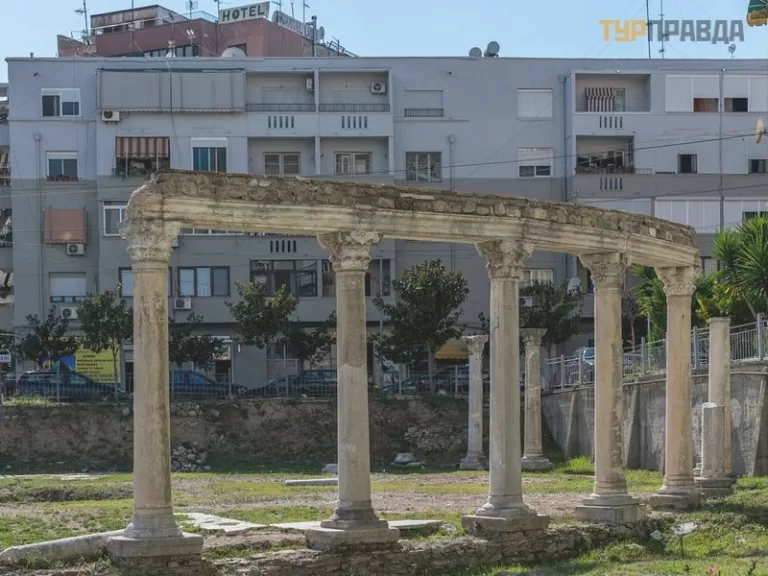

The Church of St. Friday
The Dragobia Cave
The Dragobia Cave is a karstic type of cave and has been declared a Natural Monument. It is located at an altitude of 1200 meters above sea level, near the village of Dragobi in the Margegaj municipality of the Tropoja district. In history, it is also known as Bajram Curri’s cave, as Bajram Curri sought refuge there. The Dragobia Cave is situated to the right of the Valbona Valley, at the end of a rocky slope, and it takes the form of a karstic hollow with a length of about 8 meters and a height of 2-4 meters.
This cave, nestled among beech forests and in a well-protected location, remains undiscovered and is not frequently visited by tourists, possibly due to the challenging mountainous terrain. Traveling to this area requires specialized local guides.
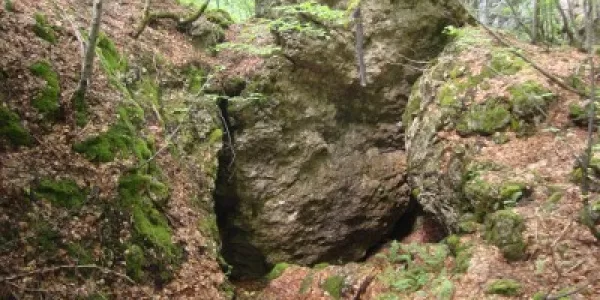

The Bajram Curri Mill
The Gashi River
The Gashi River is one of the natural wonders of Albania, protected by UNESCO as one of the most pristine natural areas in the country. UNESCO has included two natural reserves in Albania on the World Heritage List, specifically for the old beech forests along the Gashi River in the valley of Valbona National Park and Rrajca.
A significant part of the Gashi River is covered by virgin beech forests. The strictly protected area is a habitat for various wildlife species, including brown bears, chamois, wolves, wild boars, lynxes, and more. The geographic valley is crossed by flowing waters that have supported the flourishing and undisturbed natural world for decades, untouched by human hands. The Gashi River and its surrounding valley are one of the most attractive areas for mountain tourism in the Albanian Alps.


Mic Sokoli’s Tower
Syri i Sheganit
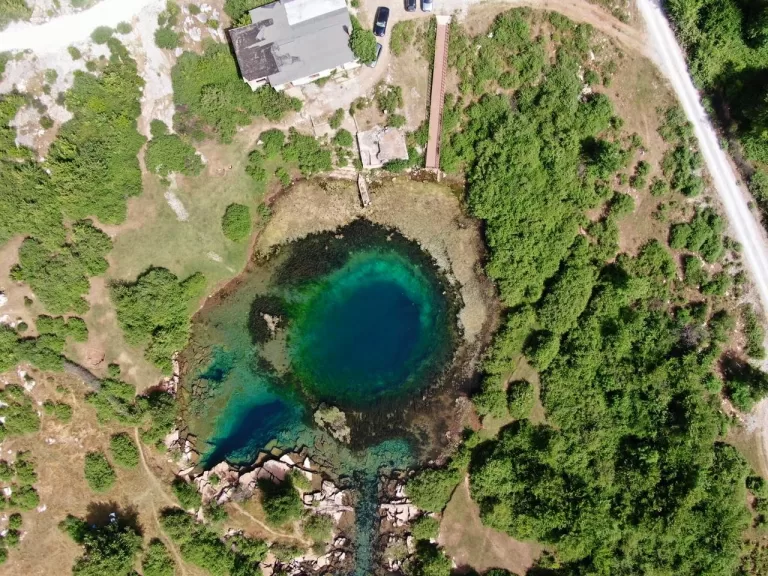
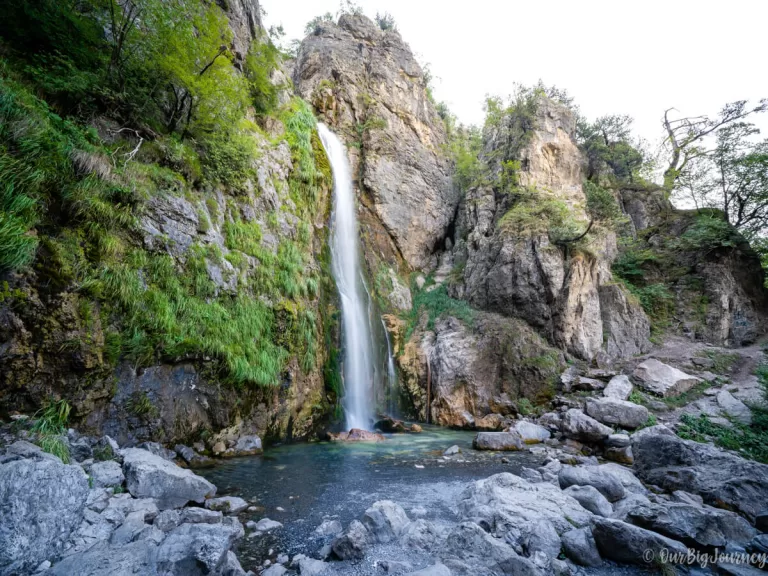
Theth Waterfall
One of the enchanting natural monuments in the Albanian Alps is Theth Waterfall, located in the village of Theth, near the Shalë municipality in the Shkodër region. It is situated at an altitude of 900 meters above sea level.
Theth Waterfall is 30 meters high and offers a breathtaking view to the entire area. It is one of the most visited attractions by foreign tourists in the mountainous village of Theth, along the journey along the Koplik – Theth road.
Olistoliths of Tepesa Hill
This Albanian natural monument stretches in the hills of Tepesa near Shkodër and consists of two limestone blocks from the tectonic zone of the Alps, with a height of 10-15 meters. The olistoliths are easily accessible by following the road to Rozafa Castle.
Gajtan Cave
This cave is located near the village of Gajtan, part of the Gur i Zi municipality. Near the cave, you can find an Illyrian fortified settlement dating back to the Iron Age. You can visit this monument while passing through the rural road from Shkodër to Gur i Zi to Gajtan on foot.
Cave of Jubani
Cave of Jubani is located about 300 meters from the village of Juban in the municipality of Vau i Dejës.
This natural monument, formed by the karstic natural process in Triassic-Jurassic limestone rocks, features still unknown branching passages and creates several attractive enlargements and micro-formations. Cave of Jubani can be visited through the road from Shkodër to Gur i Zi to Juban, as well as by footpath near the Sheldi Mountain.
Cirque of Jezercë Pit
The Cirque of Jezercë Pit, declared a Natural Monument, is also known as the Beautiful Cirque of Jezercë and is among the most mentioned intermountain pits. It is located near the village of Theth and represents a glacial-karstic pit in a glacial cirque.
Theth Cave
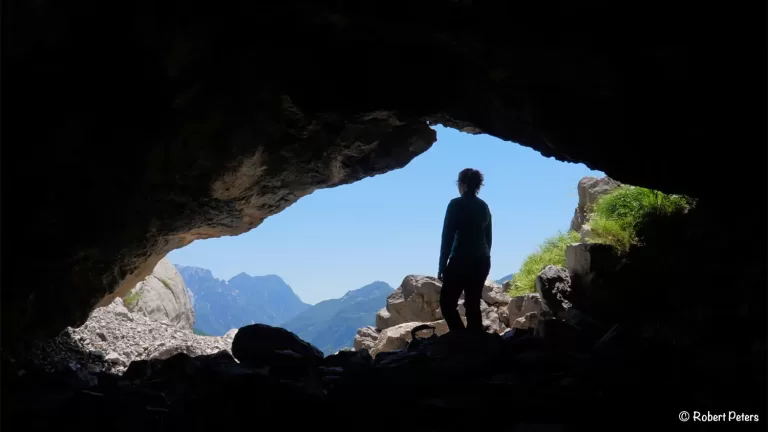
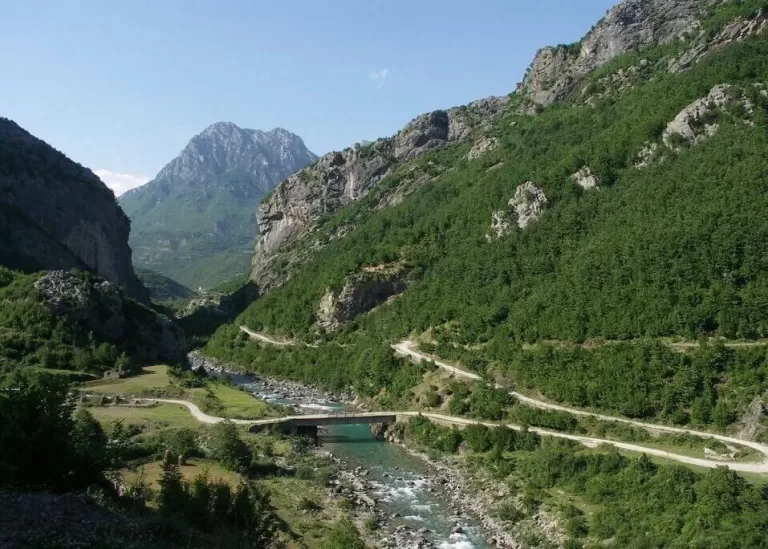
Shala Gates
Lake Jezercë
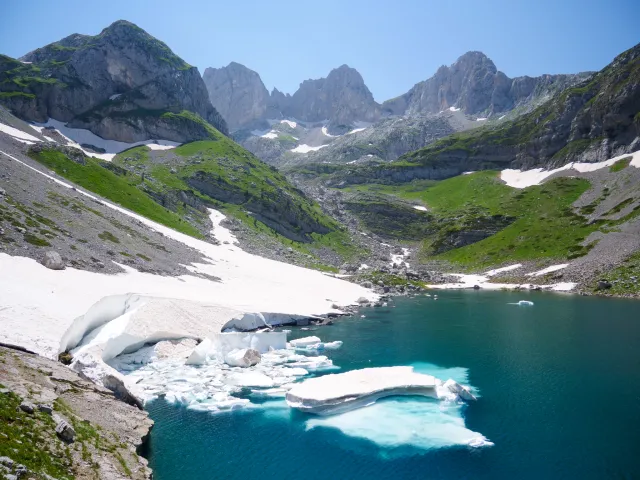
Flag Pine of Qafë Pejë
The natural monument “Flag Pine” is located at Qafë Pejë, at an altitude of 1700 meters above sea level. It consists of a 200-year-old tree with a crown in the shape of a flag, with a height of 20 meters and a trunk diameter of 1.6 meters.
Flag Pine has scientific, biological, ecological, cultural, educational, and touristic value. This natural monument can be visited by traversing the Shkodër-Theth road and also via a footpath.
The Forest of the “Franc Jozef” Island
The Forest of the “Franc Jozef” Island, named in honor of the Austrian emperor, is located in the delta of the Buna River, near the village of Velipojë, at an altitude of 1.2 meters above sea level. Covering an area of 4.5 hectares, this forest consists of trees such as black pine, oak, and others, with roots reaching up to 75 years old, facing the risk of extinction, and heights of 12-16 meters. The Forest of the “Franc Jozef” Island provides a habitat for waterfowl and can be visited via the Shkodër-Velipojë road and the Buna River estuary.
Customise your Albanian tour now!
Other Destinations
Get in touch with our friendly team
- contact@absolutealbania.com
- +355 67 40 567 56
